As the name suggests, fruit flies are small flying insects that are very much attracted to fruits, both ripe and rotten. This is why you are likely to see them inside your home, especially if you have fruits. But how many types of fruit flies are there? What are their feeding habits? Get to know more about these fruit pests!
How many types of fruit flies are there? Fruit flies are extremely diverse in appearance, behavior, and breeding habitat, with over 1,500 different species. Some of the four primary species of fruit flies—the Mediterranean fruit fly, Mexican fruit fly, Caribbean fruit fly, and Queensland fruit fly.
Keep on reading to know more about these tiny insects, as will be discussed below.
What Are Fruit Flies?
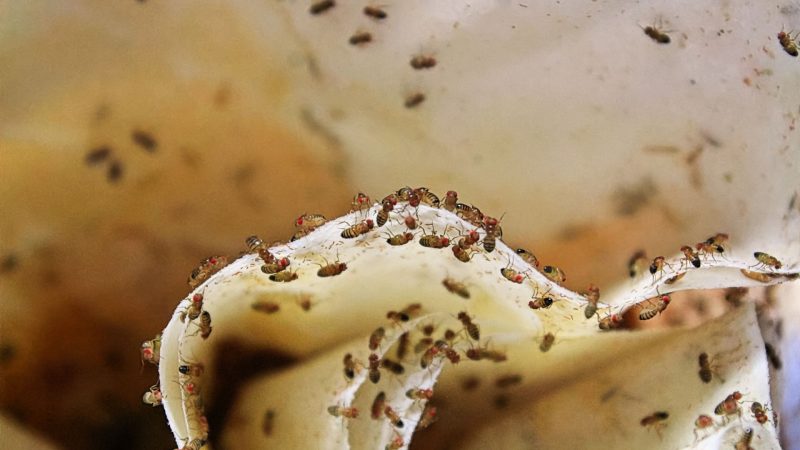
The fruit fly is a species known as “Drosophila melanogaster” and is also sometimes referred to as “vinegar fly.” It belonged to the Drosophilidae family and was originally an African species. Aside from houses, you can also see them in fruit stands, restaurants, as well as garbage cans, and damp sites with rotten fruits.
Fruit flies have a rapid life cycle which makes them the subject of several studies for many decades until now. These tiny insects are also being used for biological research in genetics, life history evolution, microbial pathogenesis, and physiology. On the other hand, they remain to be pests in fruits and vegetables.
What Do Fruit Flies Look Like?
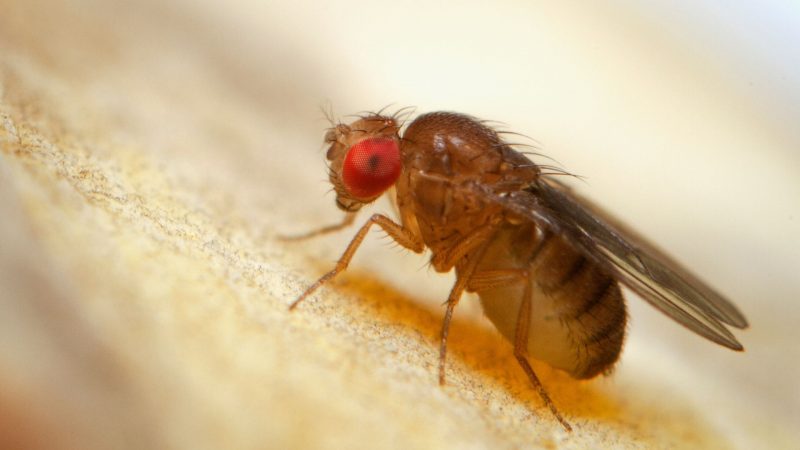
In general, most fruit flies have red eyes, while some species may have dark eyes. They have an oval, tan body and can grow up to 1/8 inch in length. Their thorax (mid-section of the body) is tan, while their abdomen is black on top and grey underneath. Meanwhile, their antennae have feathery bristles.
Related: Where Do Fruit Flies Come From? | Information and Facts
What Are the Differences Between Male and Female Fruit Flies?
The main difference between a male and a female fruit fly is their genitalia. Male fruit flies have dark, rounded genitalia at the tip of their abdomen, while females have light, pointed genitalia. Males also have a sex comb while females have none. This looks like a mass of closely-spaced bristles located on their forelegs.
What Is the Life Cycle of Fruit Flies?

Just like most insects, fruit flies undergo a complete four-stage life cycle, which consists of the following:
Eggs
They start as eggs, and females can lay up to 500 eggs during their entire life span. The eggs are usually laid in fruits and decaying organic material and will hatch about 24 hours after they are laid. The optimal temperature for fruit fly eggs is 70-80 °F.
Larvae
The next stage is the larvae (maggots), which are accompanied by bacteria that cause the fruit to rot. The larvae will consume as many foods as possible so it can store the energy and nutrients it needs during the pupal stage. Once the fruit or other food source becomes too well-fermented, the larvae will stop feeding.
Pupa
During this time, the fruit is ripened and will fall to the ground until it rots. Once the emerging adults are ready, the puparium will turn black. Then, the fully-matured larvae will leave the fruit and will burrow into the soil for pupation, which usually lasts for 4 days. Once they have forced their way out, the adults will now turn lighter in color.
These small, white larvae will molt twice for the next 4-5 days and will develop from the first instar to the third instar stages. They are relatively small, and you can hardly notice them, especially since they are now away from the food source. At this point, the growing larva is also at rest but slowly developing a hard shell. While inside the cocoon, the larvae will slowly grow six legs and a pair of crumpled wings.
Adult
Shortly after, they will emerge as adult fruit flies and will be ready to mate after 2-3 days. Under normal weather conditions or about 25 °C (77 °F), the entire metamorphosis may take 1-2 weeks to complete.
An adult fruit fly usually lives up to 40-50 days. Fruit flies are also polygamous creatures, and females can mate with several males while storing sperm for future use. On the other hand, males can modify their mating behavior in the future, making them faster to reproduce. Copulation usually lasts for 15-20 minutes.
What Are the Feeding Habits of Fruit Flies?
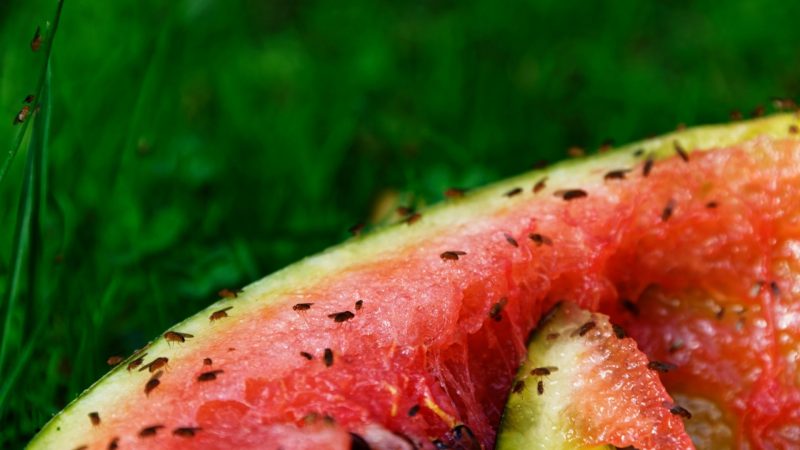
In most cases, adult fruit flies are active during warmer months. Aside from fruits where the females lay their eggs, fruit flies also love fermented items such as wine, beer, and other liquors. They are most fond of citrus and bananas. Nevertheless, they really enjoy punching the skin of overripe fruits and vegetables.
How Fast Can Fruit Flies Walk?
Just like many other Hexapoda insects, fruit flies can also walk using a tripod. This means that they swing their three legs on one side while the other three legs remain steady. But because of their small size, inertial forces are negligible. On average, fruit flies can walk as slow as 0-15 mm/s and as fast as 30 mm/s.
How Far Can a Fruit Fly Fly?
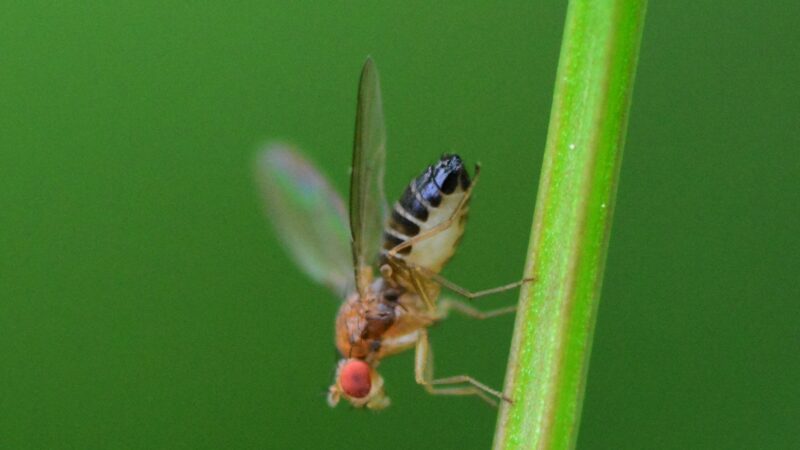
Believe it or not, fruit flies are great flyers. They can easily change their flight path once they sense danger. In fact, they can rotate 90° in less than 50 milliseconds, and they beat their wings 200 times per second. Scientists learned that a typical fruit fly could fly to as far as 9 miles (14.5 kilometers) in a single flight!
How Many Types of Fruit Flies Are There?
Wild Type
The wild type is the common type and has the same description as the fruit flies mentioned earlier. Females are slightly bigger than males. In general, they are sensitive to light intensity, so they fly away once they see a shadow.
Mutant-Type
On the other hand, the mutant type is very rare and is usually characterized by a mutant form of a single gene or multiple genes. Nevertheless, there are many kinds of mutation. This includes having white genes, which means they have white eyes, and curly genes, resulting in curly wings.
How Many Species of Fruit Flies Are There?
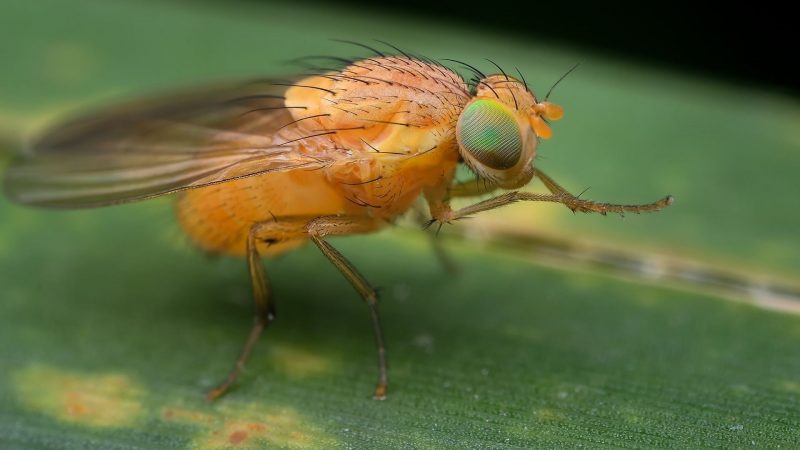
Aside from being house pests, fruit flies have also been invading the fruit industry. There are more than 1500 fruit fly species all over the world. But so far, there are four major species of fruit flies that are considered super pests – the Mediterranean fruit fly, Mexican fruit fly, Caribbean fruit fly, and Queensland fruit fly.
Mediterranean Fruit Fly
Also known as “Ceratitis capitata,” the Mediterranean fruit fly originated in sub-Saharan Africa and is one of the most destructive fruit pests in the world. Although it has infested lots of countries in Africa, Europe, and Asia, there were also some infestations in Texas, California, and Florida during the 20th century.
Mexican Fruit Fly
As the name suggests, the Mexican fruit fly is native to Mexico and Central America. Also known as “Anastrepha ludens,” this fruit fly can grow up to 7-10 mm (0.28-0.39 in) in length and is larger than the common housefly. They have green eyes, a yellow-to-brown body and are usually hosted in citrus and apples.
Caribbean Fruit Fly
Also known as “Anastrepha suspensa,” the Caribbean fruit fly is a close relative of the Mexican fruit fly. On the other hand, it has not brought a serious impact on agriculture as compared to the Mediterranean fruit fly. They can grow up to 6.5 mm (0.25 in) in length or 1/2 to 2 times bigger than a common housefly.
Queensland Fruit Fly
Also known as “Bactrocera tryoni,” the Queensland fruit fly (Qfly) is considered one of Australia’s most serious fruit flies. Based on records, it has caused a total of $300 million loss in agriculture, domestically and internationally. On average, a Qfly can grow up to about 6-8 mm long, and a female can lay 100 eggs a day.
Related: Eliminate Fruit Flies Forever | Proven Techniques and Tips!
How Are Fruit Flies Helpful in Genetic Analysis?
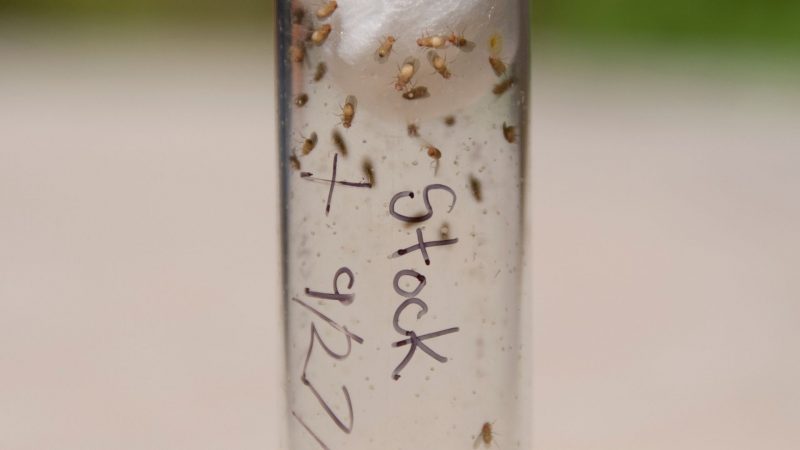
As mentioned earlier, scientists have been using fruit flies in several studies, including genetic analysis. As a matter of fact, these fruit pests were among the first organisms used in the related experiments. According to records, the first experimental study using fruit flies was at Columbia University back in 1910.
Interestingly, fruit flies have lots of reasons why they have been the favorites of researchers. First of all, males and females can easily be identified. Secondly, their life cycle is fast and can easily be monitored and understood. Thirdly, it only has 4 pairs of chromosomes – 3 autosomes and one pair of sex chromosomes.
How Do Fruit Flies Affect Gardens?

The truth is, fruit flies don’t damage or eat the plants in your garden. Instead, they feed on decaying fruits and other organic matter. Therefore, they will reduce your range in growing fruit-bearing plants. Some species are also very likely to contaminate food with bacteria as they transfer from one fruit to another.
How Do Fruit Flies Affect the Fruit Industry?
Regardless of species, fruit flies have been causing outbreaks around the world. They also have contributed a lot to the loss of millions of dollars in fruit production every year simply because infected fruits are no longer saleable. As a domino effect, the supply is greatly reduced, and the fruits will be more expensive.
Related: Fruit Flies vs. Gnats | Pictures and Proven Techniques to Get Rid of Them!
List of Sources
Potter, M. F. 1994. Fruit Flies. University of Kentucky, College of Agriculture, Food and Environment.
Statistics Manual: Life Cycle and Anatomy of Drosophila. Vanderbilt University.
The “Fly Room” at Columbia. Indiana University Bloomington.
Russel, H. 2013. How to get rid of fruit flies in your home. Michigan State University.
Mau, F. L R., Matin, J. L. 2007. Bactrocera dorsalis (Hendel). University of Hawaii, Extension Entomology & UH-CTAHR Integrated Pest Management Program.
- Bed Bug Surge 2025: How to Detect, Prevent, and Safely Eliminate Infestations in Top U.S. Cities - June 18, 2025
- Asian Needle Ants Invade US Homes: 2025 Guide to Identification, Risks, and Effective Control - June 11, 2025
- New World Screwworm Alert: How US Livestock Owners Can Prevent Outbreaks and Protect Herds [Summer 2025 Update] - June 8, 2025

